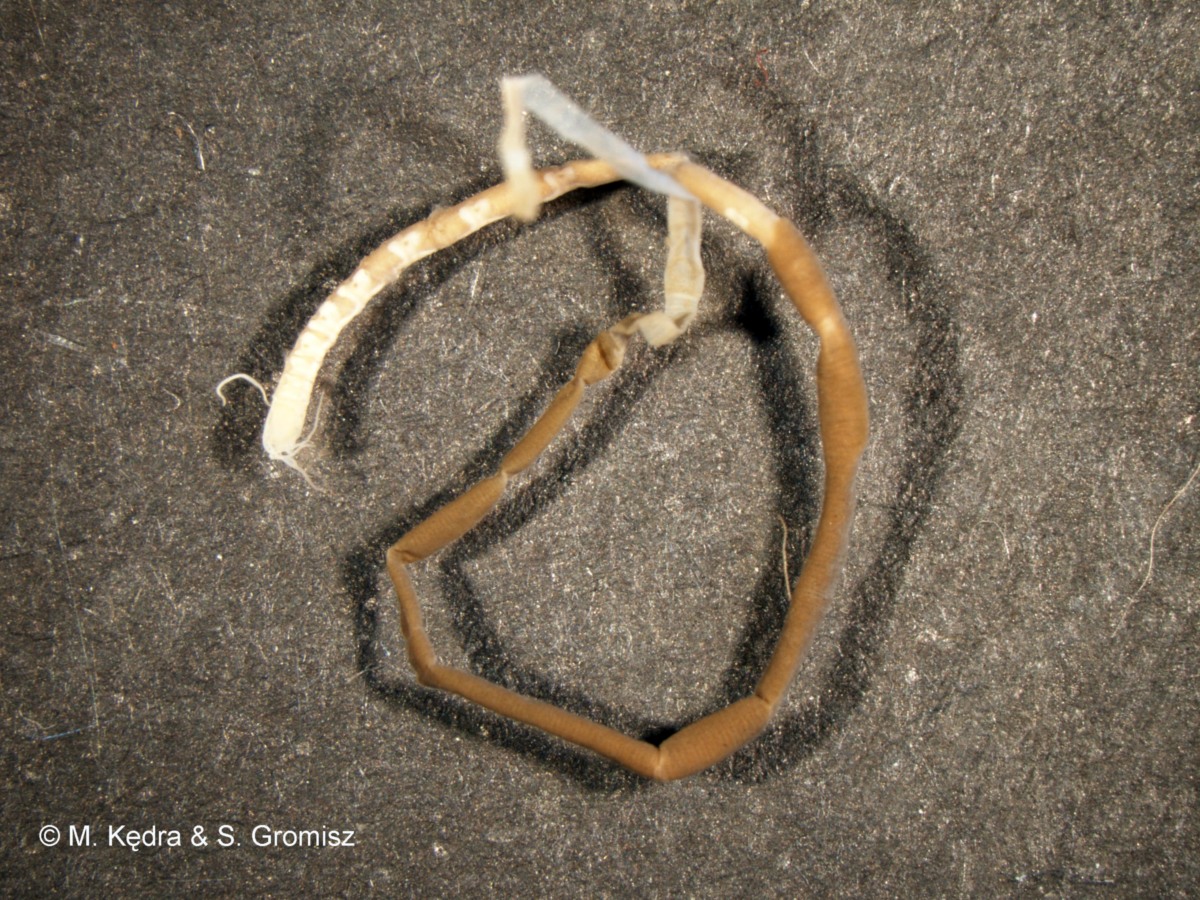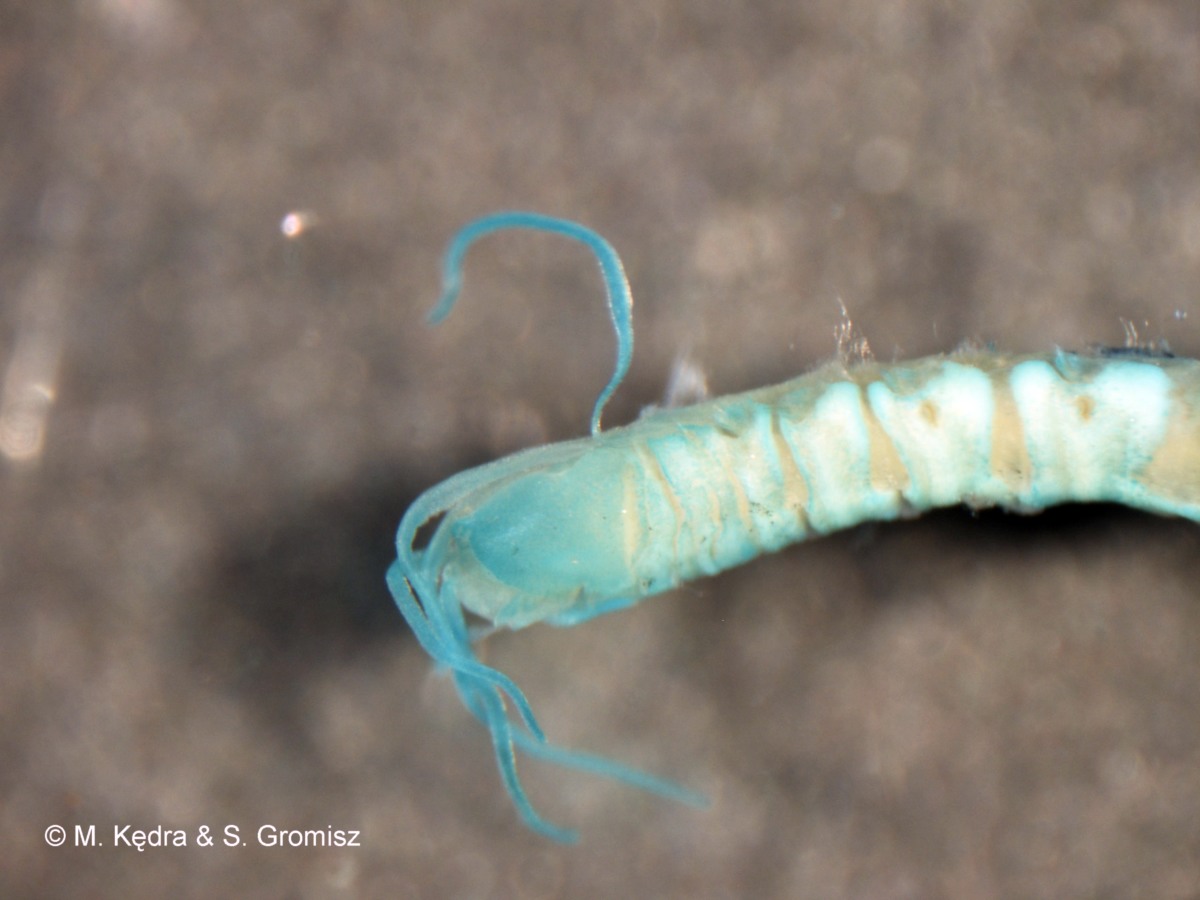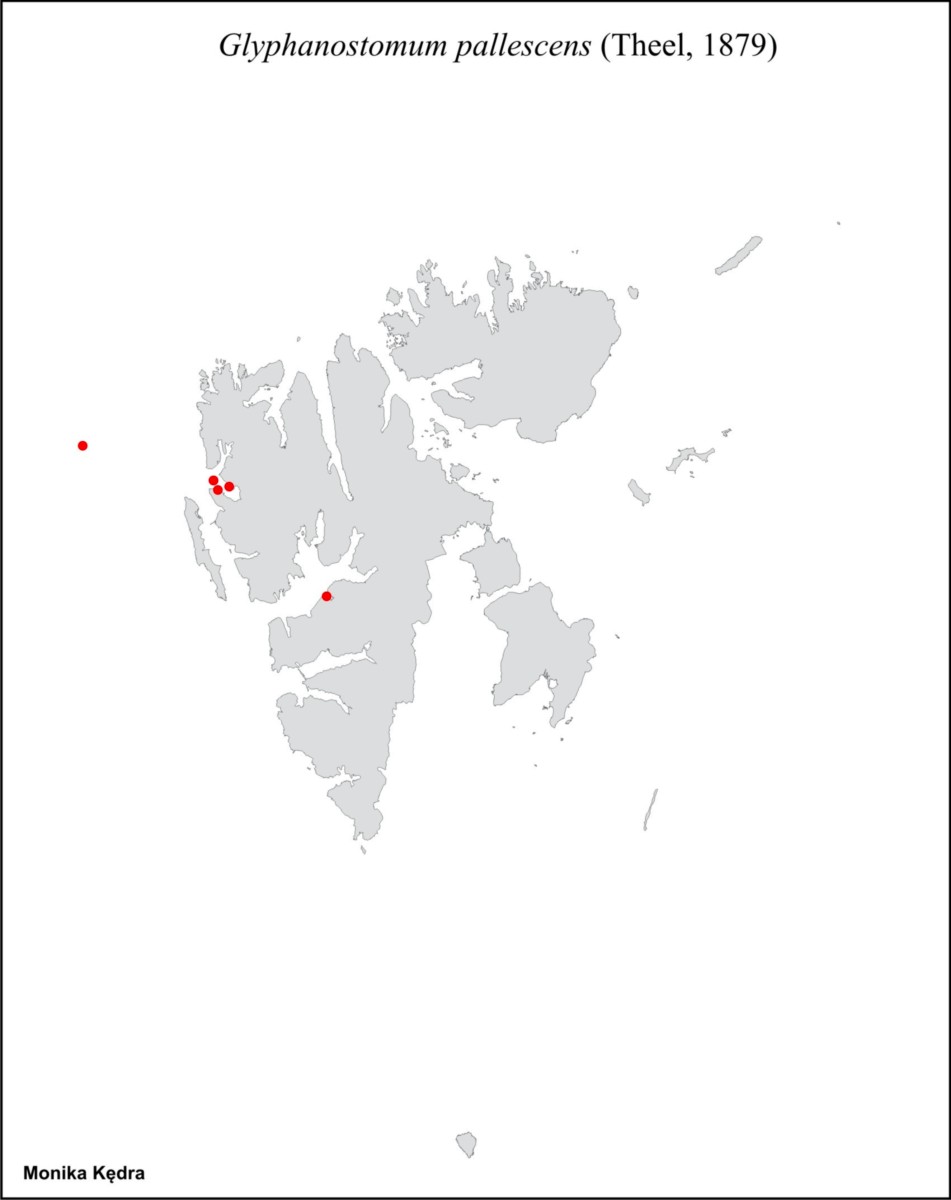Glyphanostomum pallescens (Theel, 1879)

|

|

|
Samytha pallescens Theel, 1879
Distinguishing characteristics
Shape of prostomium (giving the characteristic appearance of a dog’s head).
No paleae.
Banchiae in two widely separated group.
Species description
Body long and slender. Prostomium without glandular ridges or eyespots, longitudinally and transversely folded, giving the characteristic appearance of a dog’s head. Branchiae in two widely separated groups. Three branchiae of each group in one transverse row, close together but not connected at the basis. 14 thoracic segments with notopodia with capillary chaetae, the posterior 11 also with neuropodia with uncini. About 30 abdominal uncinigerous segments. Pygidium with two lateral cirri and several small papillae. Tube – long (to 160mm), thin and narrow, closely fitting the worm, incrusted with a thin layer of mud and fine sand (occasionally also siliceous sponge spicules), exteriorly closely and distinctly annulate.
Size
Up to 35mm long.
Color
Habitat
Mainly on muddy sand. 45-3400 m
Mobility
Sedentary.
Feeding
Surface deposit feeder.
Facultative suspension feeder.
Life cycle
Distribution
Arctic-Atlantic-Pacific species, East Greenland, Iceland, Svalbard, Barents Sea, Norwegian Sea, northern and central Norwegian coast, north coast of Jutland, Portugal, Northwest Atlantic, west Greenland, Canadian Arctic, Novaya Semlya, American Pacific to California, Bering Sea, Sea of Okhotsk.

